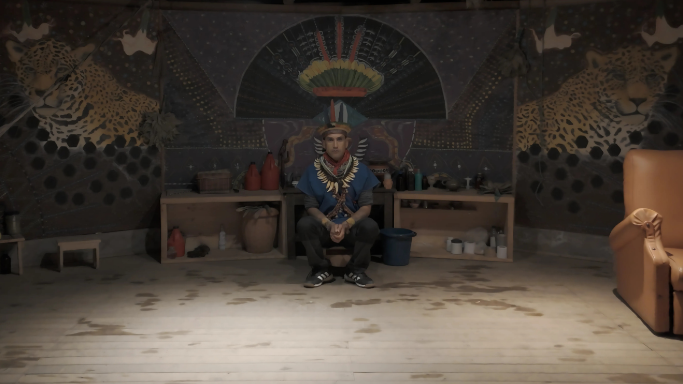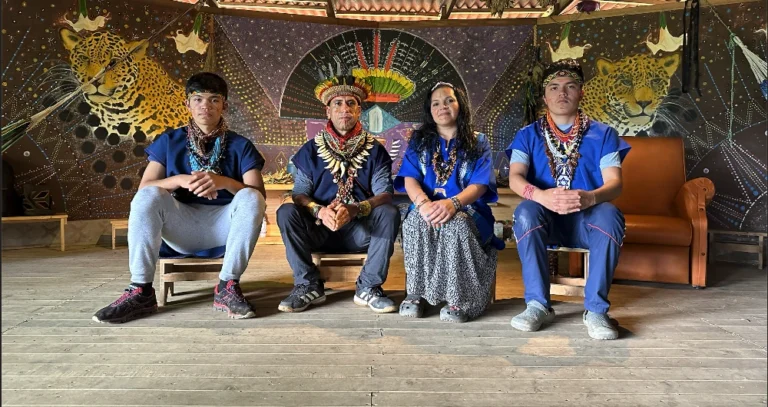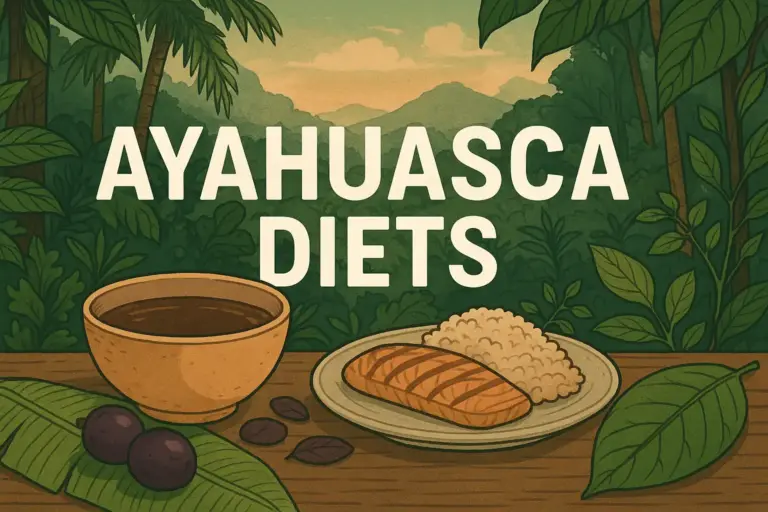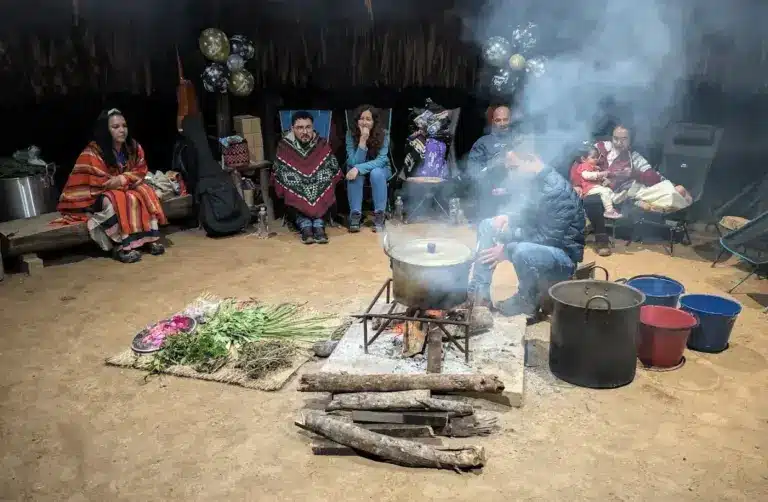Is Ayahuasca Legal? Understanding the Laws, and the Spirit, Behind Colombia’s Protection of Yagé
When people first hear about ayahuasca, the next question often comes fast: is it legal? It’s an understandable concern. The brew has made its way from the deep Amazon to city yoga studios and online documentaries, and with that expansion has come confusion — between medicine and drug, between ceremony and consumption.
This is an attempt to bring clarity. To explain not just what the law says, but also the spirit behind how Colombia, one of ayahuasca’s true homelands, protects it.
Ayahuasca’s Roots: A Sacred Medicine, Not a Modern Trend
Ayahuasca — or yagé, as it’s called in Colombia — is an ancestral Amazonian brew prepared from two plants: Banisteriopsis caapi (the vine) and Psychotria viridis (the leaf). Together they open perception and bring what many describe as an encounter with truth itself. For Indigenous nations across the Amazon, this is not a “trip.” It’s a dialogue with spirit, guided by taitas and abuelas who’ve spent a lifetime learning its ways.
Pharmacologically, it’s simple science: the vine contains natural MAO inhibitors that allow DMT from the leaf to become active in the body. But that’s not the story that matters. What matters is that yagé is a bridge — between human and nature, between the visible and the unseen.

Why Governments Fear What They Don’t Understand
Modern law was not built to understand spirit plants. In 1971, global authorities gathered in Vienna to sign the United Nations Convention on Psychotropic Substances, classifying DMT — one of ayahuasca’s active compounds — as a Schedule I controlled substance. Yet, as detailed in the Yaogará Ark research summary on the 1971 UN Convention, the treaty specifically excludes the plants themselves. The Convention’s own commentary states that natural materials containing these substances, such as the ayahuasca vine or chacruna leaf, are not under international control.
Despite that, many governments adopted strict national laws that failed to see this distinction. They saw chemistry, not ceremony. They feared misuse more than they understood meaning. So while the plants remain legal under international law, the experience of drinking them — and the intent behind that act — is what determines legality from country to country.
Around the World: How Different Nations Treat Ayahuasca
In the United States, ayahuasca is illegal under federal law because of its DMT content. Yet, the Supreme Court in Gonzales v. O Centro Espírita Beneficente União do Vegetal ruled that sincere religious groups could be exempt under the Religious Freedom Restoration Act. That means certain recognized churches can legally import and serve ayahuasca, but the process to receive this exemption is complex and rare.
Across Europe, the landscape is fragmented. France banned even the ayahuasca vine itself. The Netherlands allowed ceremonies for years, then reversed course in 2019. Spain and Portugal remain in a legal grey zone, where ceremonies happen quietly under cultural or religious protection. Countries like the UK, Germany, and Sweden explicitly criminalize ayahuasca because of its DMT content.
Further south, the story changes. In Brazil, ayahuasca is fully legal for religious use, recognized since 1992 by the country’s National Council on Drug Policy. In Peru, it’s protected as part of national cultural heritage. Ecuador allows Indigenous use, though commercial retreat operations remain largely unregulated.
And then there’s Colombia — a country whose constitution offers one of the clearest protections for ancestral plant medicine on earth.
Is Ayahuasca Legal in Colombia?
Colombia’s answer is both simple and profound: there is no law prohibiting yagé. Instead, its use is recognized under the constitutional rights of Indigenous peoples to preserve and practice their traditions.
Article 246 of the 1991 Colombian Constitution grants Indigenous authorities the power to exercise their own justice systems within their territories. That includes their spiritual and healing practices, which naturally encompass yagé. In practice, this means traditional ceremonies led by recognized taitas operate in a state of functional legality — they don’t need government permission because they already have ancestral authority.
This framework was strengthened by Law 1164 of 2007, which formally recognized traditional medicine as part of Colombia’s national health system, and most recently by Decree 480 of 2025, which established the Indigenous Intercultural Health System (SISPI). This decree ensures that Indigenous healing systems stand side by side with Western medicine, equally valid and protected.
In 2010, the Ministry of Culture declared the Yuruparí ritual — which includes the ceremonial use of ayahuasca — as part of Colombia’s national cultural heritage. A year later, UNESCO recognized it as part of the Intangible Cultural Heritage of Humanity. These acknowledgments go beyond legality; they express moral and cultural protection.
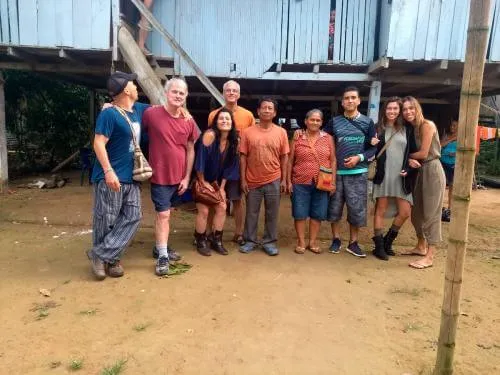
How Camino al Sol Operates Within This Legal and Cultural Framework
At Camino al Sol, ceremonies are held within this living framework of tradition and respect. The retreat, based near Medellín in the Andean foothills, works with taitas and elders from several Indigenous lineages — including the Siona, Carare, and Murui Witoto. Each carries the blessing of their community and the responsibility to share this medicine with integrity.
Our work is not about expanding consciousness for entertainment. It’s about service — to those who come seeking healing, and to the ancestral knowledge that makes that healing possible. Every retreat is conducted with medical screening, dietary preparation, and aftercare integration. The environment is designed for safety and reverence, not spectacle.
For those researching legality, Camino al Sol stands as an example of how sacred medicine can exist within the law when practiced responsibly. It operates transparently and in alignment with Colombia’s protections for traditional medicine and Indigenous authority.
If you want to learn how we hold space, read our Ayahuasca Safety Guide or explore what makes an Authentic Ayahuasca Retreat in Colombia truly grounded in lineage and ethics.
For Travelers and Seekers: What Legal Really Means
Visitors from abroad can legally join ayahuasca ceremonies in Colombia, provided these are guided by recognized traditional healers. Yet legality is only the starting point. What truly matters is intention — coming with respect, transparency, and readiness.
Before attending, ask simple questions: Who guides the ceremony? What is their lineage? How are participants screened? Real healers will answer clearly. Authentic spaces will not promise miracles, only the opportunity to meet yourself more honestly.
If you’re choosing where to drink, explore our reflection on the Best Place to Drink Ayahuasca in Medellín or read more About Camino al Sol. Each resource offers insight into how legality, safety, and respect coexist in practice.
Beyond Legalities: The Responsibility of the Seeker
The real question is not is it legal, but am I ready to meet what it will show me. Laws can protect a ceremony, but not the honesty it requires.
Ayahuasca is not a quick fix or a guaranteed awakening. It’s a mirror — and sometimes what it reflects can be hard to face. This is why the guidance of taitas and the containment of true ceremony matter so deeply.
To walk this path responsibly is to understand that the medicine belongs to the forest and to the peoples who have cared for it since time immemorial. Our role as guests is to listen, not to take.
So yes, ayahuasca is legal in Colombia — but more importantly, it is respected. And that respect carries a weight of responsibility for everyone who chooses to sit with it.
If you feel called to experience this medicine in its rightful home, come with openness and humility. Remember that legality is not a permission slip — it’s a doorway to a relationship with something ancient, alive, and sacred.

